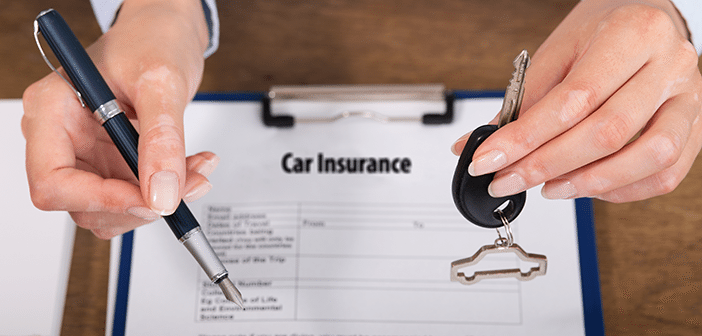Know Your Products and Risks
By Rick Christensen, Vice President, Product Development
It is widely known in the retail automotive space that reinsurance is an excellent back-end program to significantly enhance dealer wealth creation. However, it’s important to remember that the funds in a reinsurance program are primarily to be used to pay F&I product claims. As a dealer, which do you think is more important for your business?
- Increasing your margin on every product sold; or,
- Having enough funds in your reinsurance program to pay claims and accumulate future wealth.
The goals of the F&I office and reinsurance don’t have to be mutually exclusive. In fact, dealerships that align the goals have a better opportunity to increase PRU, product penetration, and customer retention while attaining their wealth management objectives.
Step 1. Know Your Goals
So, how do you create a cohesive relationship between reinsurance and F&I? First, you must understand your goals. Think about reinsurance as just another business, and with any successful business there is a purpose and an objective. If we successfully achieve our purpose “Satisfying Customer Needs” then we position ourselves to attain our objective which is to run the business profitably.
As a dealer, your reinsurance platform is made up of reserve funds set aside to pay future claims on specific F&I products sold in your dealership. These funds are held and managed through investments to match the risk exposure. Once a policy has expired, or the term of the risk has ended, the money left over after all claims are paid represents the earned premium/profit.
The objective of any reinsurance platform is to accumulate revenue to support the dealer’s wealth management position. In order to achieve this objective, consumers must want to buy the dealers F&I products and the fund must be properly capitalized to cover future claims risk. Meaning the products must be adequately priced so that consumers understand and want the value provided. By actively maintaining an understanding of the product and its price position there will be sufficient funds for investment, and to pay claims which will yield earned premiums that support the goal of wealth management through the reinsurance fund.
Based on these goals, it’s now possible to address F&I department goals. If your F&I managers focus on just PRU, and try to increase the price of the products as much as possible, to grow PRU what do you think happens? The penetration rate goes down as more customers decide they can’t afford the coverage, eroding the amount of money going in the reinsurance fund. In addition, chargebacks increase as customers fail to see the value or refinance and cancel the products they purchased with their loan. Where does the money come from to pay for those chargebacks? The reinsurance fund!
All good F&I directors know a well performing F&I department focusses on product penetration as well as PRU. The good news is that F&I goals dovetail nicely with the dealers reinsurance and profitability goals. The key here is to train F&I managers on demonstrating the value of the products being sold to customers. This includes in-depth product knowledge, competitive pricing, and taking the time to understand the needs of the dealer’s customers. Providing a number of products that consumers find valuable can directly correlate with increased penetration, PRU and wealth.
Step 2. Know Your Products
Beyond understanding your goals, it is also vital that you understand your products. Not all F&I products are created equal and not all products need to be included in your reinsurance platform. There is a common myth in reinsurance that risk is isolated by product; however, this is simply not true.
If the reserves set aside to pay claims for all your F&I products are in the same reinsurance pool, and the loss ratio for one product skyrockets, that one product affects the reserves of the entire pool. Put another way, let’s say you sell 100 Tire and Wheel contracts in a month. The next month, 200 claims are filed for pothole damage. Once you reach the amount you originally set aside to pay those claims, you don’t stop paying for the rest of the claims. The rest of that money comes from the other reserves you set aside for the other products you sell because it’s all in the same pool.
Certain products always make sense for reinsurance, such as a vehicle service contract or GAP. However, there are always exceptions to the rule. For example, if the majority of your customers are subprime with longer term contracts, GAP loss ratios are likely to be higher. Therefore, GAP might not be the best product for your reinsurance platform.
Step 3. Know Your Risk
Along with knowing your products, you must know your risk. If you have a reinsurance platform, you have the fiduciary duty to both your future wealth and your customers to understand how product reserve structure, pricing and market variables affect claims. While some products are great to sell from a PRU standpoint, they might not be the best from a reinsurance standpoint.
Understanding your risk includes understanding your customers, the demographics and geography of your area, regional weather patterns, and the economy as a whole. Work with your product administrator so you can always have a good forecast of how much of the reserves in your reinsurance platform will go towards paying claims, based on trends like:
- How many claims are paid each year
- The average cost of each claim
- The seasonality of claims volumes
In addition, be aware of actions that can negatively erode the capital in your reinsurance reserve. As the cost of living changes annually so do the cost of parts and labor rates that impact the claims risk each year. These almost always increase thus resulting in an increase in claims costs. As those rates go up, your F&I prices must go up if you want to maintain the same loss ratios in your reinsurance company.
For example if $400 of every contract goes into your reinsurance company and that contribution has remained constant over the last 10 years with no changes to price you very likely have seen the loss ratios increase by at least 20%. This is the impact with just a 2% change annually in the cost of living index. This lack of attention will result in the erosion of your reinsurance fund by paying more for claims than what you should be allocating for reserves. For this reason, it’s important that you work with your product administrator to implement regular pricing adjustments to ensure your product pricing is competitive and has the potential to accumulate wealth.
The next time your product administrator comes by to provide new rates, ask them what went in to the rate change. Do they expect a change in claims volume? Did they switch underwriters? Were the products priced too low from the start? When it comes to your wealth and dealership profitability, you can never be over-informed.
By aligning F&I and reinsurance goals, dealers have a significantly greater opportunity to increase PRU, penetration rates, and overall profitability. Backing this up with ongoing training and partnering with a product provider that understands the market to price products competitively puts dealers in the best position to accelerate the accumulation of future wealth while cultivating repeat business. Remember, this all stems from putting the customer’s needs first and providing them with valuable service.








